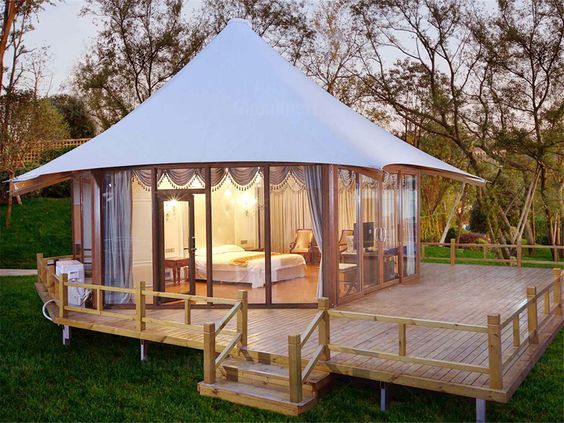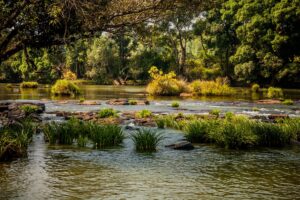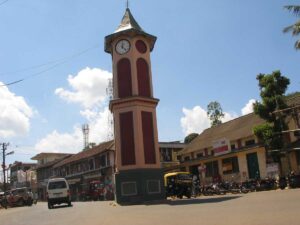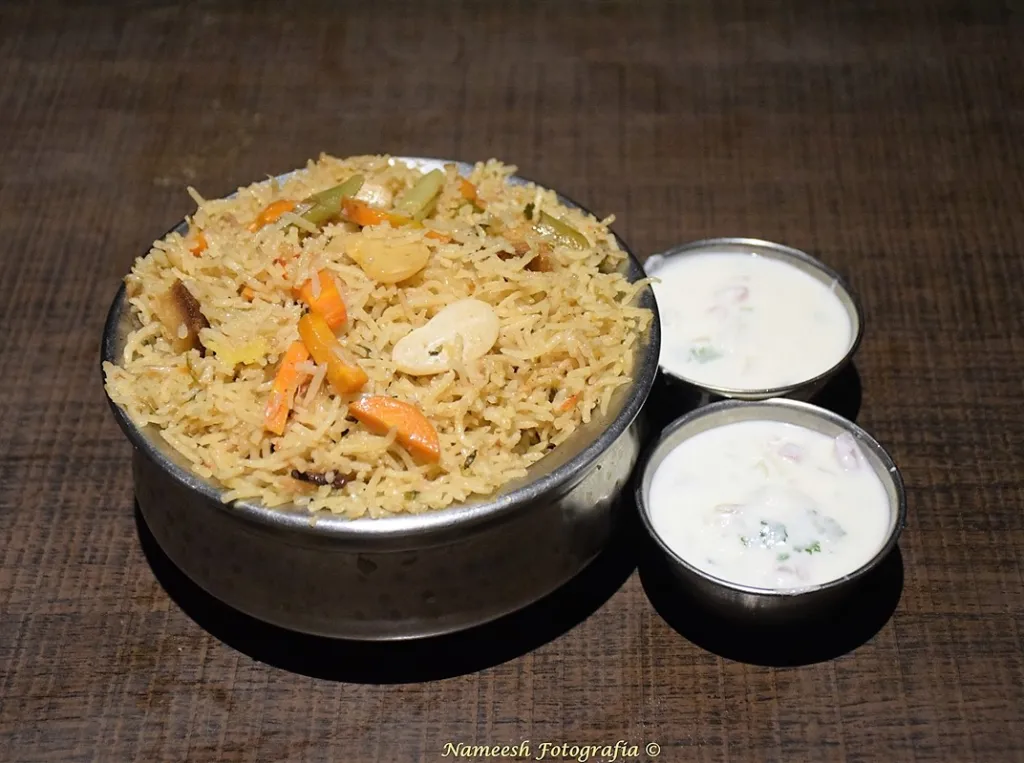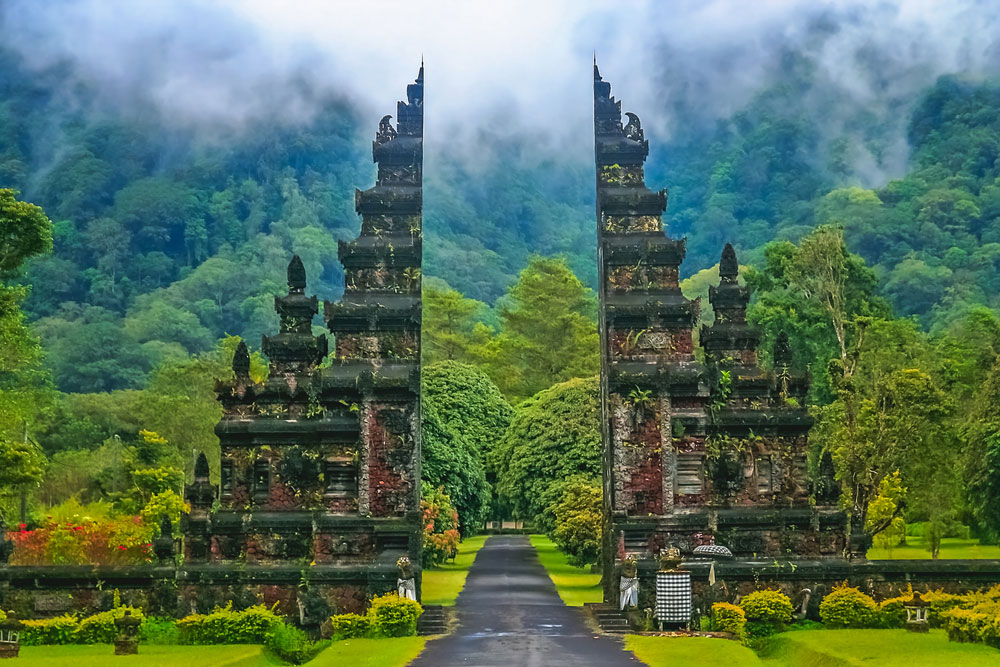About Coorg
Coorg is a perfect example. Enchanted by its lush coffee plantations, charming homestays, and the untamed beauty of the Western Ghats, Coorg is an ideal destination for holidays. Here are some of the unforgettable moments and hidden gems to discover in this magical region.”
Coorg perfectly embodies the saying. Captivated by its lush coffee plantations, cozy homestays, and the wild beauty of the Western Ghats, making it the perfect choice for relaxation. Here are some unforgettable moments and hidden gems we uncovered during our time in this enchanting region.
Exotic Homestays of Coorg
A journey to Coorg, officially known as the Kodagu district, in state of Karnataka part of South India, stay in a delightful homestay called Rusbery, nestled in a quaint village near Virajpet near to Madikeri.

Start your day by greeting the sun from the gazebo overlooking our outhouse. Between the gazebo and outhouse stood a beautiful bungalow. Our mornings began with coffee, followed by a hearty breakfast, and refreshing juice made from fruits grown in the Rusbery gardens. Dinner was always a treat, featuring delightful local delicacies.
Spend a few days in Coorg, where the charm resembled that of a quaint hill station. In contrast, the southern part of Coorg was raw and rustic. While the north felt like a well-manicured garden, the south was an untamed wilderness.
The coffee plantations is right next to the homestay, surrounded by a beautiful forest. The place is owned by a passionate wildlife conservationist who had even participated in the tiger census.
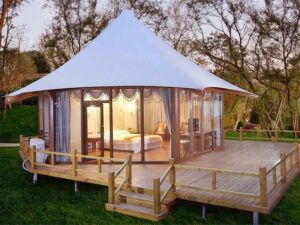
Staying in a tent was an unexpectedly relaxing experience—being outdoors yet warm, cozy, and with all the privacy one could wish for. It was the perfect setting.
Enjoy candlelit dinners on a dining sit-out next to the tent, feasting on fresh local recipes made with organic, home-grown ingredients, all personally overseen.
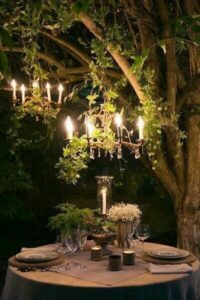
After dinner, sit on the porch or by a bonfire, under a blanket of starry skies, until the cold drove us indoors to the warmth and comfort of our tent.
These homestay experiences completely hooked on the idea of staying, which has now become integral part of travels.
Top Sightseeing in Coorg
BYLEKUPPE
Amidst the coffee plantations and forests lies the surprising Tibetan settlement of Bylakuppe. About 40 km south of Madikeri, you’ll find the Namdroling Monastery. This monastery was built on land donated to Tibetan refugees by the Government of India.
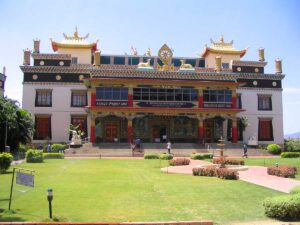
The main prayer hall of the monastery is adorned with a series of colorful paintings, adding a vibrant touch to the space. It also houses a religious college, where monks were seen studying and preparing for their exams. Aside from their distinctive maroon robes, the setting resembled a typical university campus!
ST. ANNE’S CHURCH
Another significant landmark in Virajpet is St. Anne’s Church, built in the Gothic style. Some Christians from Mangalore, The Raja ordered the construction of a church in 1792, providing land and funds for the project. In 1868, the original structure was dismantled and replaced with the existing church.
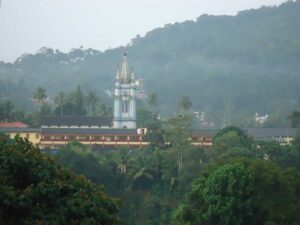
Dodda Veerarajendra also gifted a gold crown, a brass lamp, and an ornamental brass box to the church. Today, only the brass lamp, locally known as ‘kuthu bolucha’, remains in the church. The lamp bears an inscription with the letter ‘V’ in Kannada, representing Veerarajendra, and the words ‘Nalaknad Aramane’.
CLOCK TOWER
Virajpet, located 32 km from Madikeri, is a taluk headquarters nestled at the foot of a hill. The town is well-connected by road to coastal Kerala towns like Kannur and Tellicherry. Virajpet was established in 1792 A.D. by Kodagu Raja Dodda Veerarajendra on the site where he met British Governor Robert Abercromby in 1791. During this meeting, the Governor requested the Raja to provide passage for British troops moving from Bombay through Tellicherry and Coorg, en route to Srirangapatna to confront Mysore ruler Tipu Sultan.
Dodda Veerarajendra invited craftsmen and traders from neighboring states to settle in the town, and to this day, some of the street names reflect this heritage, such as Telugu Street, Bengali Street, and Jain Street.
